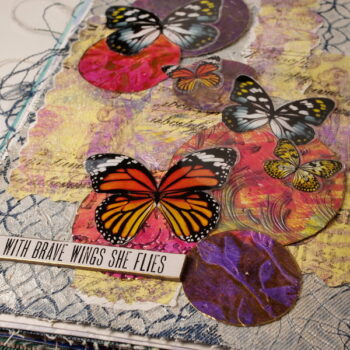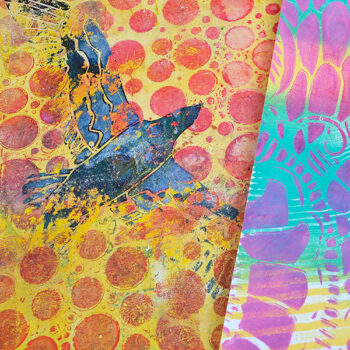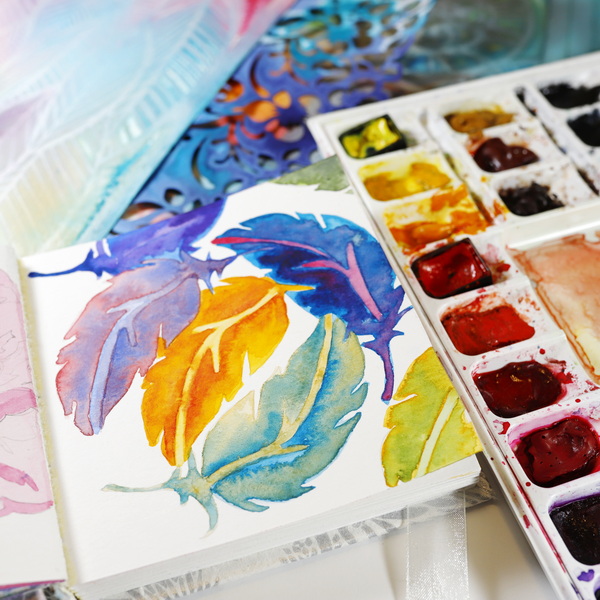
How to use Watercolors with Stencils
Using watercolors with stencils may seem like two things that don’t go together in your art journal. The loose nature of watercolor appears incompatible with stencils. But with a bit of experimentation and imagination, you can get some amazing and unexpected results using watercolors with stencils.
Hop-A-Long Studio is reader-supported. When you buy through links on our site, we may earn an affiliate commission at no cost to you. Learn more.
Adding Watercolors to Stencils
When adding watercolors to stencils, you may need to change your expectation for the final result. When using acrylic paints, gel or paste mediums with stencils, the medium can be applied, and the stencil removed immediately. For watercolor, a little patience and a looser technique will give you great results.
Detailed Watercolor Images
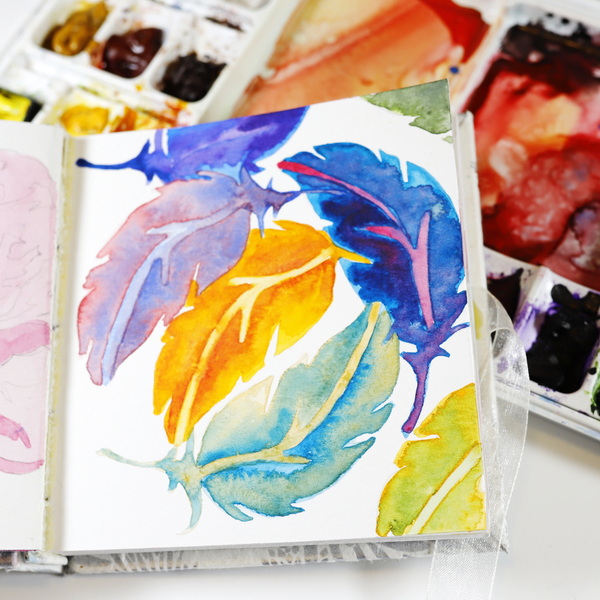
For detailed and strong contrasting images using watercolor with stencils, trace the image with a pencil into your journal. Once the shape is added to the page, use watercolor paints to add color to the image. If you are looking for a precise watercolor image, this is the best way to create one with stencils.
Loose Watercolor Technique with Stencils
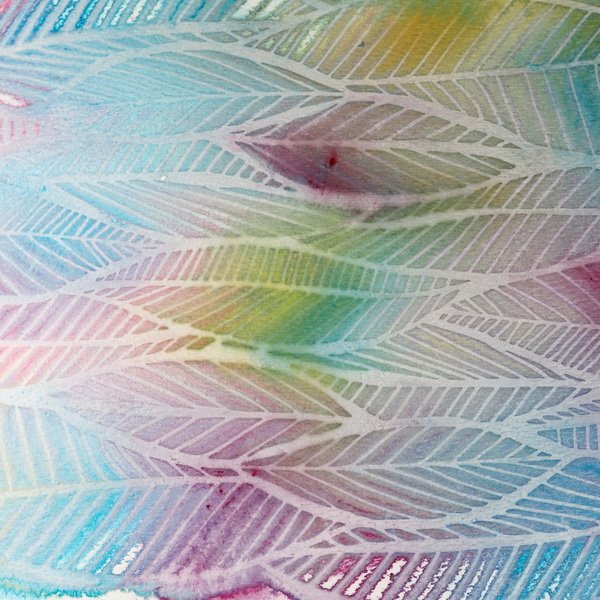
But one of my favorite ways to use watercolors with stencils is by using a very loose watercolor technique. For best results, use a good quality watercolor paper. My favorite watercolor paper is Strathmore 200 watercolor paper as it takes water well and isn’t too expensive. It’s one of my favorite papers for art journal projects because of the way it absorbs and handles a variety of mediums.
Spritz the watercolor paper with water and place the stencil on top. By adding water before adding the stencil, this will help the stencil stay in place.
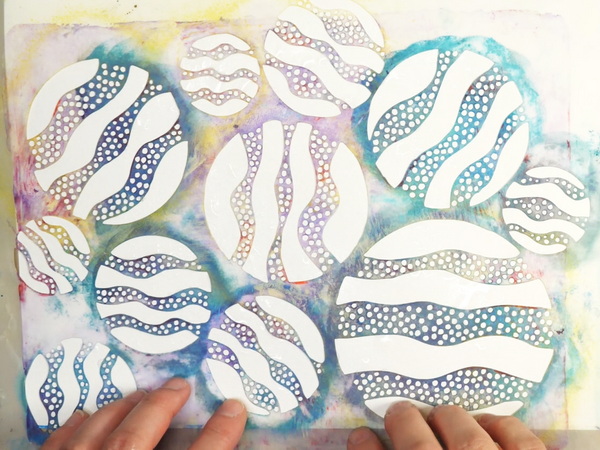
Add drops of watercolor paint onto the surface. You can mix a bit of color from your watercolor palette or use liquid watercolor. You could also choose to use India ink, Brusho Crystal Colours, dye inkpad reinkers, fountain pen ink or any other sort of water-soluble ink for this step.
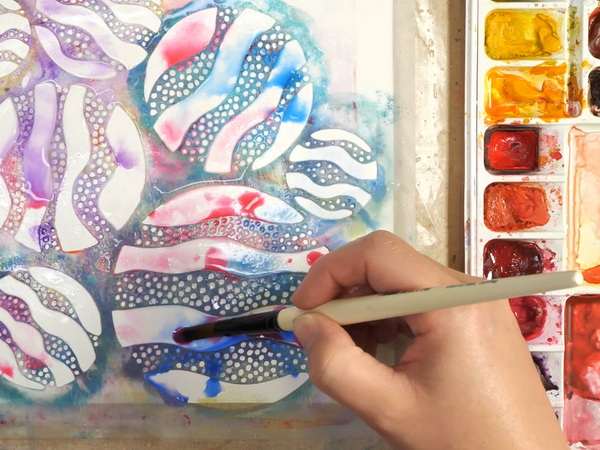
Use a spray bottle to spritz more water to the surface to spread the color. Some of the ink will seep under the stencil while other ink will be stopped by the edges of the stencil design. Add more watercolor and water until you get the color mix and intensity that you like. Be aware that as the watercolor dries, it will dry lighter than the color applied.
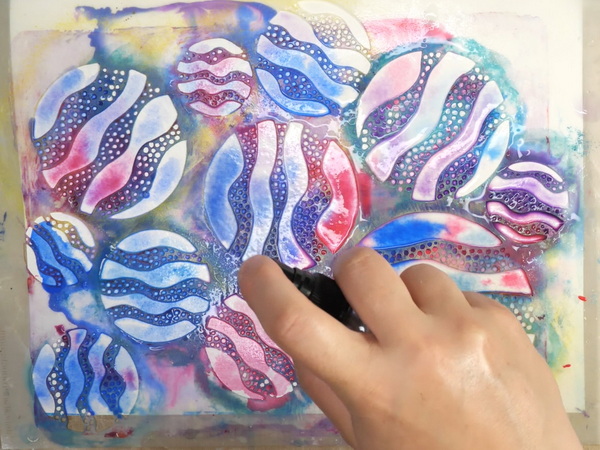
Let the stencil sit for several hours or overnight until the surface is fully dry. Pull off the stencil to see your beautiful design!
Troubleshooting using Watercolors with Stencils
The key to this technique is leaving the stencil on the background until it is fully dry. If you pull the stencil up while the watercolor is still wet, you will lose the design.
Please make sure to use only watercolor or water soluble ink but not acrylic paint. Fluid acrylic paint will cause the stencil to stick to the paper and you won’t be able to get it off afterwards.
Choosing a Stencil to Use with Watercolors
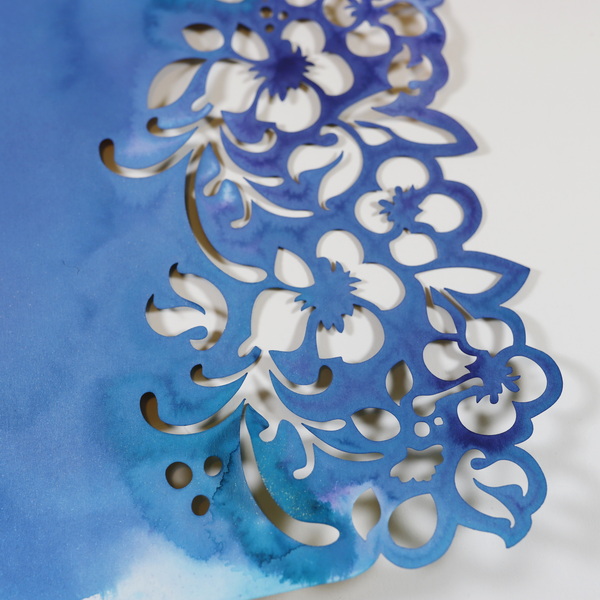
Any stencil can work with watercolor, but you can also use die cut images that have been cut out with cardstock for this technique. Just be aware that they will buckle once water is added to the background. But this is a great way of not only using a die cut for a design, but the die cut will pick up the color of the watercolor paints. These die cuts can be used later to create beautiful accents to other projects.
Large stencils with bigger open areas work the best for this technique. Otherwise you will need to add a lot of watercolor and water to get the color to move through the design. As you can see in the picture below, using a very detailed stencil, I ended up adding a lot of watercolor and ink to the page to get the look that I wanted.
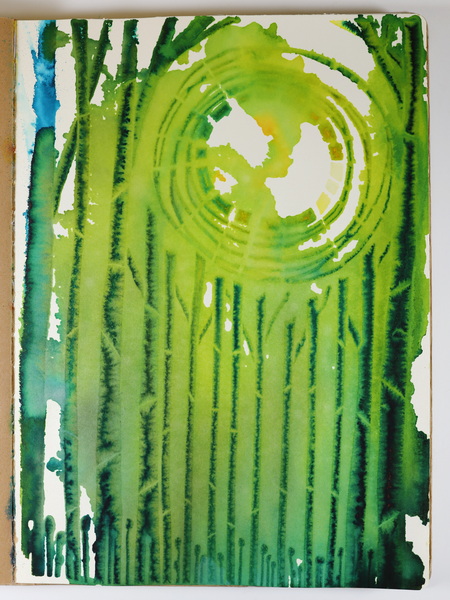
Using Different Surfaces
You can use different surfaces for this technique, not just watercolor paper. But be aware that the watercolor may sit on top of the surface and could take much longer to dry. I tried this technique on watercolor paper, mixed media paper and a Dylusions journal. All these surfaces worked, but it gave a different look depending on the surface I chose to use.
Using Different Pigments than Watercolor
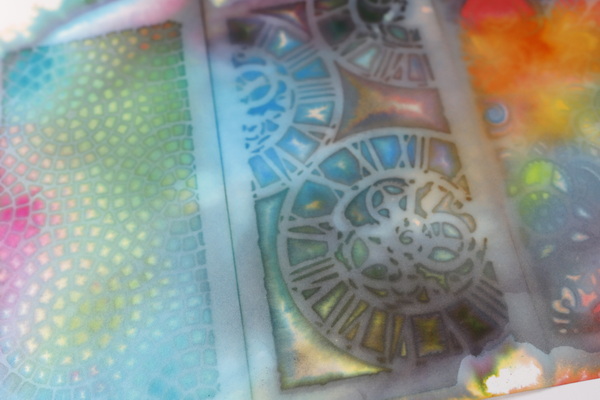
You can use a variety of watercolor paints and water-soluble inks for this technique. Depending on how much ink you use and the intensity of the color, this can give you a variety of results. Tim Holtz Distress Ink refills for ink pads work incredibly well for this technique. As the Distress Ink is meant to react with water, it blends and moves very well when spritzed with water.
India inks generally give more intense color than dye re-inkers. I also tried using fountain pen ink which is very highly pigmented and a similar color intensity to India ink. You can use almost anything sort of ink that will mix with water and is not acrylic based for this technique.
Any Questions about how to use Watercolors with Stencils?

Do you have any questions about this using watercolors with stencils? I’d love to hear what inks and watercolors you are using for this technique and how it worked for you. Leave a comment below and I’d love to start a conversation!
Project Supply List
Strathmore 200 Watercolor Paper
Dylusions Classic Journal
Mixed Media Paper
Distress Spray Bottle
Winsor and Newton Cotman Watercolor Paint: Permanent Rose, Cerulean Blue, Purple Lake
Missions Watercolor Lemon Yellow
Daniel Smith Watercolor Mayan Blue Genuine
M.Graham & Co. Watercolor Cobalt Blue
Schmincke Horadam Aquarell French Ultramarine
Holbein Artists Watercolor Quinacridone Magenta, Cadmium Deep Red
Bombay India Ink Teal
Bombay India Ink Cherry Red
Kosher Salt
Simply Simmons Watercolor Brush Size 10
Bombay India Ink Yellow
Bombay India Ink Green
Tim Holtz Distress Inks: Mowed Lawn, Worn Lipstick, Peacock Feathers, Salty Ocean, Vintage Photo, Festive Berries, Faded Jeans, Spiced Marmalade
Stencil Girl L199 Stitch a Circle Stencil
Rebecca Baer Fanfare Stencil
TCW636 Wise Owl Stencil
Freezer Paper
Masks and Die Cut Scrapbook Paper
Sailor Jentle Ink Fountain Pen Ink Purple
J. Herbin Fountain Pen Ink 1670 Collection Emeraude de Chivor
Tim Holtz Stencil Mosaic
Tim Holtz Stencil Clockwork
Tim Holtz Stencil Doodle Art 2



